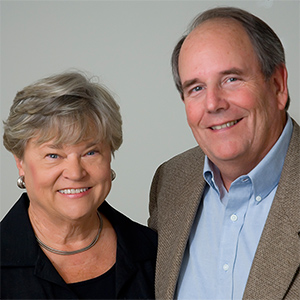Complete Generator Sizing Guide for Homes and Businesses
Published in Home Articles
Power outages can disrupt daily life and business operations. Choosing the right generator ensures essential systems stay on. A generator that’s too small won’t meet your needs, while an oversized one wastes fuel and money.
Accurate sizing avoids system overloads and unexpected failures. Whether you’re protecting a home or running a business, power reliability is key.
Learn how to match the right generator to your power needs. Use this guide to understand generator sizing and get the right setup from the start.
What is Generator Sizing?
Generator sizing is the process of calculating how much power a generator must supply during an outage. It considers both starting and running wattages of your equipment. Knowing your power demand helps prevent damage to electronics and appliances.
Each home or business has different requirements based on usage. Larger properties or facilities usually require more capacity. Accurate load calculation prevents underperformance. It avoids the risk of overheating the generator.
Sizing depends on your goals, whether for full backup or just critical loads. This step is necessary for safety, comfort, and productivity.
Why Proper Sizing Matters
An undersized generator will shut down or fail to start appliances. Oversized generators waste energy and cost more to run. Correct sizing ensures reliable backup when it matters most. It supports critical systems without interruption.
In business, this can prevent revenue loss during power cuts. At home, it keeps comfort systems and security running. The right size reduces wear and extends the generator’s lifespan. It avoids unnecessary fuel use. Proper sizing gives peace of mind when the power goes out.
Calculating Total Power Needs
Start by listing every appliance or device you plan to power. Record both running watts and starting watts. Some equipment, like fridges or AC units, needs more power to start. Add all running watts together, then calculate the highest starting wattage. Add that starting surge to the total.
Include lighting, HVAC, pumps, and any business-critical systems. Use wattage labels or check manuals for accurate figures. This step ensures you don’t overload the generator. Once you have the total, use it to match a generator with the right output.
Understanding Running and Starting Watts
Running watts keep devices operating steadily. Starting watts are the temporary power spike needed to start a motor. For example, a freezer may run on 700 watts but needs 2,100 watts to start. Always size for both to avoid shutdowns. If you ignore starting watts, the generator may trip or fail.
Devices like compressors, pumps, and HVAC systems have high starting loads. Understanding this difference is crucial in your calculation. Make a clear list showing both figures per item. The total helps guide your choice in generator sizing.
Choosing Between Whole-House and Partial Load
A whole-house system powers everything at once. Partial load setups focus only on essentials like lights, fridges, and internet. Decide what matters most during an outage. Whole-house units need larger generators. Partial load needs less power and can be more affordable.
Businesses often prefer full coverage to keep operations going. For homes, a partial load might be enough unless there are medical devices or other needs. Your lifestyle or business type will influence this decision. Be realistic about what you need and what you can afford.
Factoring in Future Power Needs
Think about upcoming appliances, expansions, or changes in your routine. Will you add a hot tub, an EV charger, or new office equipment? Plan for these in your load calculation. Future-proofing avoids the need to upgrade later.
Many businesses grow and need more power over time. Homes with growing families may see increased usage. Add a buffer of about 15 to 25 percent to your total wattage. This ensures you won’t outgrow your generator too soon. It’s a small step that saves money and hassle later on.
Residential Generator Sizing Tips
Focus on what’s essential: lighting, fridge, fans, modem, and a few outlets. Leave out high-draw appliances unless needed. A typical home might need between 5,000 and 10,000 watts. Larger homes with HVAC or well pumps may require more.
Consider your heating and cooling setup as it affects the size of generator needed. Use transfer switches for safe operation. Keep in mind that some older homes have different wiring limitations. Don’t rely on guesswork-calculate your loads properly. A well-sized system protects your home and keeps life normal during outages.
Commercial Generator Sizing Tips
Businesses must consider equipment, lighting, servers, and emergency systems. Calculate by department or area if needed. Include HVAC, refrigeration, and communication tools. Critical operations should be your focus first. Don’t forget security systems and lighting.
Power failures cost time and money, so size for full operation if possible. Factor in longer runtime needs, especially for 24/7 businesses. Many commercial properties benefit from backup for even non-essential loads. Accurate sizing supports smooth operations during any outage.
Single-Phase vs Three-Phase Power
Homes usually use single-phase power, while businesses may require three-phase power. Three-phase supports larger equipment and balanced load distribution. Know what type your property uses before choosing a generator. Three-phase generators cost more but handle larger demands.
Single-phase is enough for most residential setups. For small businesses, single-phase may still work. Larger facilities should go for three-phase options. Matching your generator to your power type avoids performance issues. This is a key step before purchase.
Portable vs Standby Generators
Portable units are great for short outages and smaller setups. Standby systems are permanently installed and switch on automatically. Businesses and large homes prefer standby for reliability. Portables are more affordable but need manual setup.
Standby systems offer seamless power with minimal delay. If you need long-term backup or have sensitive equipment, go with standby. Portables suit cabins, home offices, or short emergency use. Decide based on your needs, location, and budget. Sizing still matters for both types.
Using an Electrician or Consultant
Getting professional help from licensed electricians avoids costly errors. Electricians can do precise load calculations. They also ensure safe installation and compliance with codes. Consultants can help businesses choose scalable systems.
For complex setups, this step is worth the investment. A pro can spot oversights and suggest smarter solutions. Homeowners may overlook hidden power draws. Businesses may have special requirements like data centers or labs. An expert saves time and gives peace of mind.
Follow a Complete Generator Sizing Guide for Homes and Businesses
Choosing the right generator size protects your home or business during unexpected outages. It prevents system failures, supports comfort, and keeps operations running.
Whether you’re going with portable or standby, accurate sizing is critical. Investing time in this process ensures your backup power won’t let you down.
For more topics like this, visit our blog!





























Comments